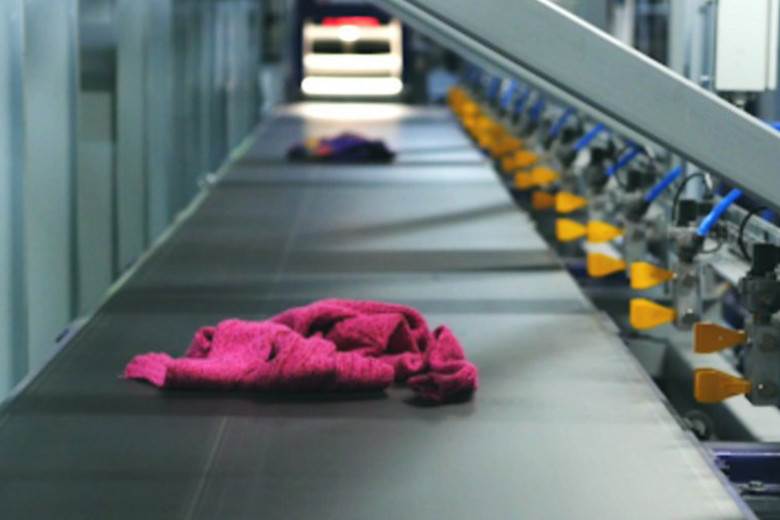Fibersort technology impresses industry stakeholders at demo day
15/03/2018

The event was attended by a wide range of industry stakeholders, including representatives from brands, retailers, textile manufacturers, textile sorters and recyclers. It offered the first opportunity to learn about how the technology works, how accurate it is and how different stakeholders can get involved in the project.
The demonstration day took place at a sorting centre operated by Dutch company Wieland Textiles. The facility is home to the only Fibersort machine currently in existence. It has been created by Belgian machinery manufacturer Valvan Baling Systems, which specialises in sorting and baling systems for the used clothing industry.
The technology is designed to allow the recycling industry to identify and separate post-consumer textiles based on fibre type. The hope is that this will prevent pure fabrics from being downcycled during recycling, which is what commonly happens at the moment.
Fibersort uses Near-infrared spectroscopy to examine the molecular structure of a fabric. It is able to determine the type of fibre based on the wavelength at which it reflects light. Advanced software and algorithms have been used to build up a material library, against which each garment that passes through the system can be checked. The technology is also capable of machine-learning, which continually improves the accuracy of the identification process.
As the technique is sensitive to organics constituents, and all textiles are organic, the project partners believe there is no limit to the type of fibre that can be recognised.
For the initial phase of the project, 14 different fibre categories have been selected. They have been chosen as they are the materials that are available in the largest volumes and have the best potential sell-on value due to demand and the recycling solutions available.
The early focus of the project has been on knitted materials, although the partners insist the technology is also capable of accurately sorting woven materials.
The Fibersort process does require a manual input. It begins with the arrival of a batch of garments on a sorting table, which must be placed by hand one piece at a time on a scanner. Near-Infrared spectroscopy is then used to detect the type of fibre, which it can do in under a second. The garment is then moved onto a conveyor belt, which incorporates 14 high-powered air nozzles and collection boxes, one for each of the pre-determined fibre categories. Once the fibre type has been identified, the system communicates with the relevant air nozzle, which is directed to fire as the garment passes, blowing it into the correct collection box.
There is also a 15th nozzle and collection box for material that either cannot be identified or can be identified but does not fall into one of the 14 categories. At present, this box takes around 60% of the total material input, meaning only 40% of the materials passing through the machine are accurately sorted. The project partners are committed to improving this figure by adding more fibre categories and by improving the accuracy of the scanning system.
At the conclusion of the demonstration day, Circle Economy invited the industry stakeholders in attendance to get involved in the project. It appealed to textile manufacturers wishing to take part in pilot projects, brands who can offer insights into what they need from post-consumer recycled materials, and collectors and sorters who wish to share some of the challenges they face.
An in-depth look the Fibersort project will feature in the next issue of WSA magazine, which will be published in May.








